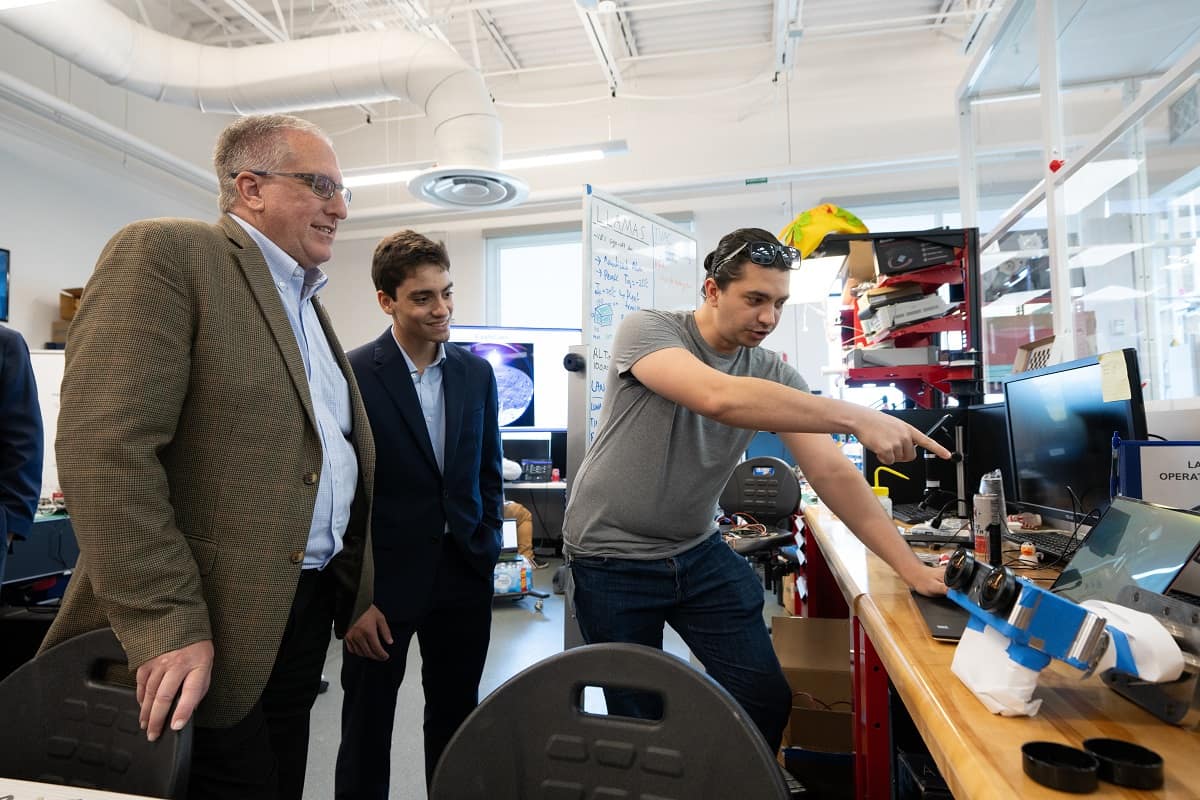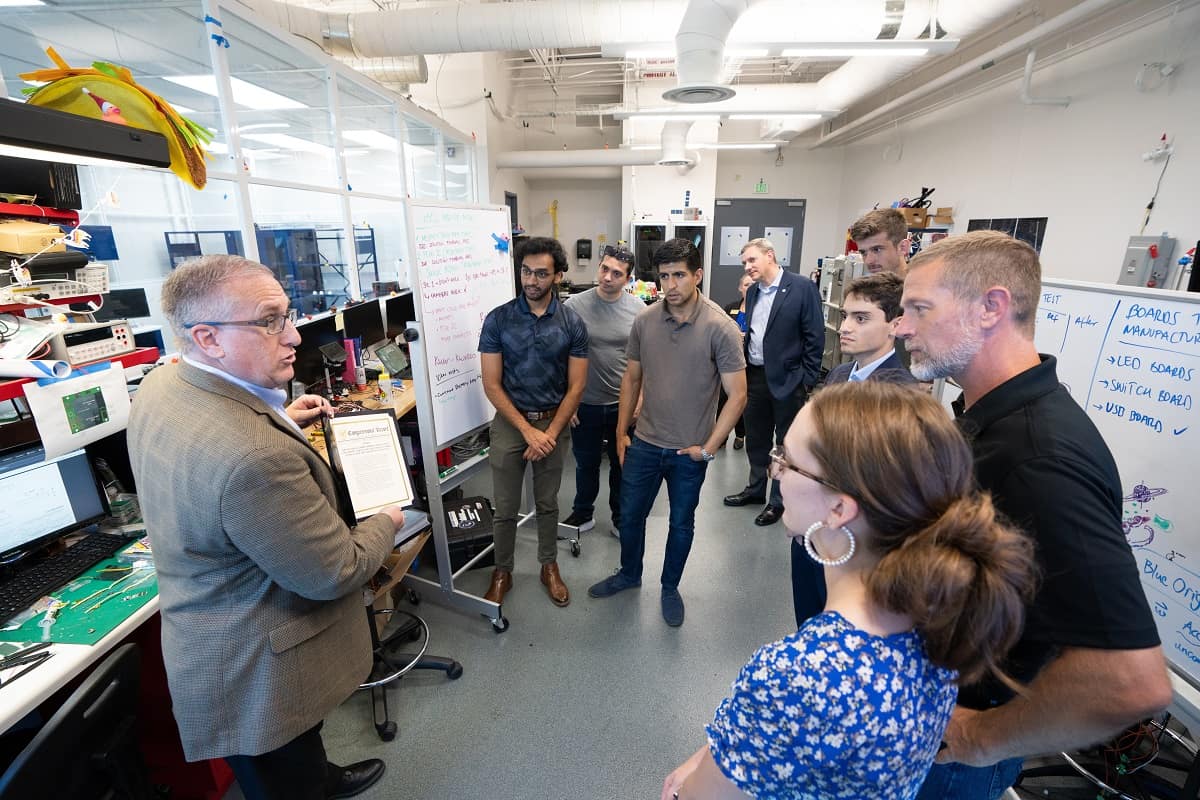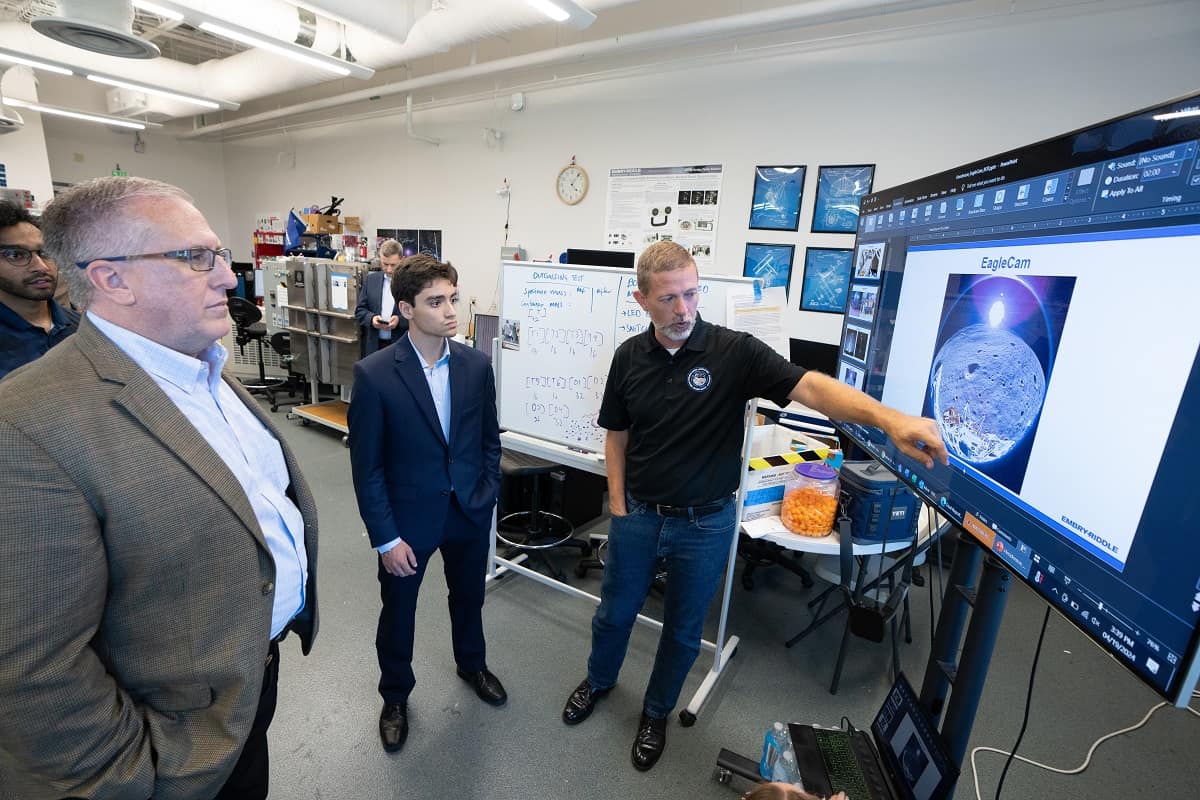U.S. Senator Recognizes Embry-Riddle Team for Moon Mission



Embry-Riddle Aeronautical University’s EagleCam team — which designed and built a CubeSat that, earlier this year, became the first student project ever to land on the moon — was recently recognized by the United States Senate.
“Mr. President, I rise today to recognize Embry-Riddle Aeronautical University,” Sen. Rick Scott submitted to the Congressional Record on March 20, 2024. “I congratulate everyone involved in this project and encourage them to continue building on their success as the United States continues its mission to once again put men on the moon.”
A mini-satellite camera system, EagleCam made history in February of this year when it touched down on the moon aboard Intuitive Machines’ Odysseus Nova-C class Lunar Lander. Barry Cotton, the central Florida district director from the Office of U.S. Sen. Rick Scott, visited Embry-Riddle last week to meet the EagleCam team and tour the Space Technologies Laboratory, where the device was manufactured.
“It was an honor to host Mr. Cotton, as a representative from the U.S. Senate, and present such an up close and personal look at the amazing things our students accomplished,’ said Dr. Troy Henderson, faculty team lead. “EagleCam was a student-run project from day one. It took years of perseverance and innovation. For all that hard work to be recognized at such a high level should inspire this team to keep pursuing lofty goals long into the future.”
In addition to meeting the students behind EagleCam, Sen. Scott’s team toured the Daytona Beach Campus and the John Mica Engineering and Aerospace Research Complex (MicaPlex), and then met with Embry-Riddle President P. Barry Butler, Ph.D., as well as other university leaders.
“The whole Embry-Riddle community rallied behind the EagleCam team throughout this project, and for them to be recognized by the U.S. Senate only adds to our pride,” Butler said. “I’m grateful to Sen. Scott, and I look forward to seeing what history-making projects our students come up with next.”

 Mike Cavaliere
Mike Cavaliere